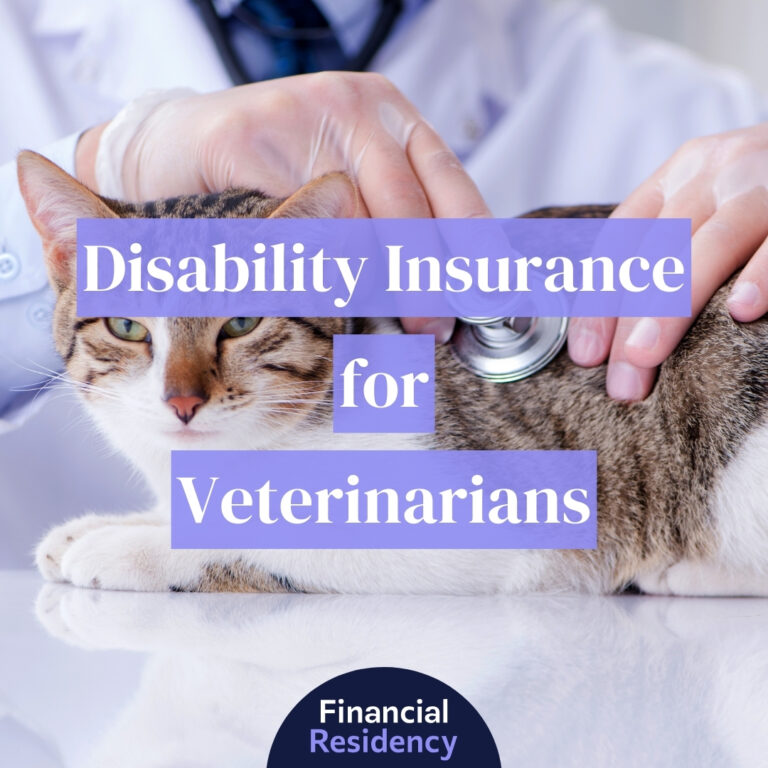If your family or loved ones rely on your income, having the right insurance coverage is the key to your household’s financial health. As a high-income earner, you may be your family’s breadwinner, but even if you aren’t, carrying insurance is a good idea.
A fiduciary financial advisor or insurance agent can help you evaluate your needs and recommend the best insurance products for your situation. As a medical professional, you likely have unique insurance needs that the general public doesn’t have to consider.
We’ve researched several different insurance plans medical professionals may need. Keep reading to discover what these policies cover and how they can provide peace of mind in your career and personal life.
Why Do Doctors Need Insurance?
Doctors need insurance because their assets and professional responsibilities can open them to significant financial liabilities.
Doctors, dentists, and other healthcare professionals earn significantly more than most Americans, but higher incomes aren’t always the salve for all financial problems. Physicians’ higher incomes afford them greater protection through insurance coverage they may otherwise not consider.
Similarly, doctors and dentists may be business owners if they work in private practice.
More disposable income may equate to more assets or dependents, both worthy of protection. The right coverage options allow you to operate your medical practice and support your family confidently.
What Types of Insurance Do Doctors Need?
Doctors and healthcare providers need various types of insurance to ensure they can smoothly operate in their field.
For the sake of this article, we’ve broken down your coverage options into personal and business insurance.
Personal Insurance:
Personal Insurance
Personal insurance protects you and your family if a medical event compromises your ability to earn an income or pay your expenses.
1. Health Insurance
As a physician, you know the importance of health insurance better than anyone. Even if you are as healthy as a horse and possess significant savings, one major accident, illness, injury, or diagnosis could lead you to financial ruin.
It’s also a safeguard for the medical professionals who treat you because insurance pays them directly for covered expenses. Carrying the right healthcare insurance allows you and your loved ones to seek preventive care and take necessary treatment steps without considering the costs.
2. Life Insurance
Life insurance protects your loved ones and dependents when you pass away. While it cannot bring you back from the dead, it can ease the financial burdens on those who mourn you.
Term life insurance is affordable insurance that pays out tax-free benefits if you pass away during the period outlined in the policy.
Permanent life insurance can be more expensive, but it provides coverage for your lifetime. This type of insurance often has a built-in savings component that gives it a cash value. Investing in permanent life insurance can diversify your portfolio and maximize the tax-free assets your loved ones inherit with your estate.
3. Disability Insurance
Many people know about the importance of life insurance but fail to consider the benefits of disability insurance. Disability insurance replaces some of your income if you cannot work for an extended period.
A disability insurance policy is a must to protect yourself from financial burdens if you have an accidental injury or illness.
Most insurance companies will allow you to purchase policies that replace as much as 60% of your income up to $20,000 per month.
For this reason, disability insurance is a solid and important investment.
4. Critical Illness Insurance
Critical illness insurance pays out a tax-free lump sum if you are diagnosed with a qualifying major illness, such as cancer or heart disease. It isn’t contingent on your ability to work, but it can give you and your family more flexibility as you recover.
It can also allow you to access additional care or make necessary home improvements to accommodate your condition.
5. Long-term Care Insurance
While many Americans can use Medicare to pay for long-term care and other medical expenses if they can’t work, it’s not always the best choice for high-income earners like physicians because there are asset tests.
If you don’t have long-term care insurance, Medicare may require you to surrender your assets to qualify, leaving your loved ones with nothing when you pass on.
Long-term care insurance protects you and your family if you experience a life-changing injury or illness at any age. This type of insurance can give you access to residential facilities and in-home care.
6. Homeowners Insurance
The law doesn’t require homeowners insurance, but it’s typically a stipulation of many mortgage lenders.
With that said, homeowners insurance is essential for residential properties because it protects the owner from liability if someone is injured. It covers repair and rebuilding expenses for catastrophic structural damages.
Business Insurance
Business insurance protects you if a complaint, injury, natural disaster, accident, or other event impacts your ability to operate your business.
7. Practice Overhead Insurance
Practice overhead insurance is a form of business protection that covers private practice overhead expenses if you can’t work due to an illness or injury.
It pays all the common overhead expenses, including rent, employee salaries, taxes, and utilities, so you don’t lose your income or business while focusing on your recovery.
8. Business Interruption Insurance
While practice overhead insurance covers you if you can’t work due to bodily issues, business interruption protects your business if a natural disaster or other catastrophic event limits your operating capacity.
Business interruption insurance guarantees you will still earn an income while focusing on repairs.
9. Workers Compensation Insurance
Unlike the earlier insurance policies outlined in this list, workers’ compensation insurance doesn’t pay you directly. Instead, it’s a form of protection for your business and assets if one of your employees is injured, disfigured, or killed on the job.
Most states require business owners to carry workers’ compensation insurance so that their employees have recourse for a portion of their lost wages and medical expenses if injured performing their job duties.
If your employee dies on the job, your workers’ compensation insurance will pay out benefits to the family. Carrying this type of insurance shows you care about your employees and their livelihoods. This degree of care can attract high-quality talent to your practice.
10. Business Auto Insurance
If you make house calls or use your car a lot for work, business auto insurance provides additional collision and property protection coverage if you get into an accident while executing business endeavors.
While you may be thinking, what about my existing car insurance? It’s important to note that most personal car insurance policies won’t cover repairs, theft, or injury if you primarily use the car for business purposes.
11. Property Insurance
Property insurance covers the physical building you conduct business in and all the equipment inside. You can obtain property insurance for rented and owned properties, and it can provide much-needed protection for some of the most expensive parts of your business should you need to repair or replace them due to an accident, natural disaster, or other event.
Property insurance typically covers computers, personal property, furniture, medical supplies, and other essential equipment needed to operate your business.
12. Professional Liability Insurance/Medical Malpractice Insurance
Because physicians and dentists are responsible for other people’s lives, they are subject to substantial liabilities if a patient makes a malpractice claim. The right liability coverage can ensure you aren’t financially responsible for issues that may arise when you treat patients.
Malpractice coverage protects physicians and other healthcare professionals if they’re sued for injury or medical negligence. While many facilities carry some form of malpractice insurance for their employees, taking out an additional policy for yourself may be necessary.
Each state has laws about healthcare professionals and how much malpractice coverage they must carry.
Consider tail coverage, an add-on for claims-made policies. Tail coverage protects policyholders when an incident happens during the insurance period, but the patient doesn’t file a claim until the policy has expired or lapsed.
Frequently Asked Questions
How do I get malpractice insurance?
You can get malpractice insurance through an individual or group policy. An individual policy is insurance coverage you purchase yourself, whereas employees typically provide a group policy.
We recommend individual malpractice insurance because you’ll have control over the policy.
What is the difference between malpractice insurance and professional liability insurance?
The difference between malpractice insurance and professional liability insurance is that malpractice insurance is limited to medical issues and incidents, whereas professional liability insurance covers incidents on the whole premises.
Professional liability insurance is the more comprehensive policy option.
What are the benefits of malpractice insurance?
The benefits of malpractice insurance include the following:
- Funds legal expenses and subsequent settlements
- Protects physicians from human error and mistakes
- Demonstrates commitment to patient welfare
Final Thoughts on Insurance for Physicians
Insurance is an important tool for protecting yourself from financial burdens, but there isn’t a single policy for all possible financial problems and scenarios.
As such, the insurance solutions that best fit your needs will be unique to your financial objectives, liabilities, and overall priorities.
At a minimum, we recommend carrying health, life and disability insurance, but your business insurance needs will depend on your employment status. If you’re self-employed or a private practice owner, malpractice, practice overhead, and business interruption insurance are among the most important policies you can carry.
With that said, insurance agents and financial advisors are experts in the field, and it can pay off to go the extra mile by consulting with them. A fiduciary financial advisor is legally obligated to act in your best interest, so they can be an accident resource for ensuring optimal insurance coverage.




